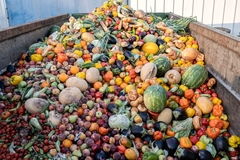Simple swaps? The Live Green Co CEO flags plant-based nutrition wins that “exceed animal protein’s metabolites”
01 Sep 2021 --- A new study suggests switching from meat burgers to veggie ones does not represent “an even swap” in nutrition. Speaking to NutritionInsight, Priyanka Srinivas, founder and CEO at The Live Green Company, a business specializing in biotechnology, discusses how plant-based foods can match and exceed animal protein’s metabolites.
As the consumer market continues to transform, some predict over 50 percent of the global meat supply will be replaced by cultured and plant-based meat in the next ten years.
Innova Market Insights notably pegged “Plant-Forward” as its second top trend for 2021, flagging the natural progression of its previously hailed “Plant-Based Revolution” theme of last year, which is expanding into different regions and categories.
The acceleration of demand for new plant-based formats and more sophisticated alternatives is forecasted for upcoming launches.
 Food formulators should look to include a range of nutrient and protein-rich plant-based foods in their goods, says Srinivas.What is missing in meat?
Food formulators should look to include a range of nutrient and protein-rich plant-based foods in their goods, says Srinivas.What is missing in meat?
While most plant-based products feature vitamins, fats and protein relatively similar to real beef, researchers at Duke University, North Carolina, US, concluded that plant-based meat is significantly different from grass-fed ground beef in terms of metabolite content.

The study was published in Scientific Reports.
With a difference of up to 90 percent in some cases, beef contains 22 metabolites, including several amino acids and vitamins that aren’t present in plant substitutes.
However, the plant-based products contain 31 metabolites that were missing in the meat. These included vitamin C and phytosterols, naturally found in plant cell membranes.
“Despite looking like they have similar protein content on the packet, there are big differences between meat and plant-based protein foods,” explains Srinivas.
“While many plant proteins may not contain all essential amino acids, they can be combined, so no essential parts of the protein are missing. I recommend eating and opting for products that combine a variety of legumes, whole grains, nuts, seeds, and other fruits and vegetables.”
Finding nutrients and protein-rich foods
Food formulators looking to meet these nutrition goals should include a range of protein-rich plant-based foods in their goods, adds Sriniva. .jpg) Priyanka Srinivas, founder and CEO at The Live Green Company.
Priyanka Srinivas, founder and CEO at The Live Green Company.
“Rather than sticking to just vegetable-based formulas, or those made uniquely from soy or gluten, a combination of protein-rich ingredients (like legumes), vitamin and antioxidant-rich veggies and fruits (like peas, mushrooms or ginger), and nuts and seeds that contain healthy fats (like sunflower or chia seeds) will provide a complete protein and nutrient base for consumers.”
“With the right natural ingredients, the need for synthetic additives or animal products is dramatically reduced,” she maintains.
Another actionable area for reformulation is plant-based products’ levels of sodium. Nearly two in five plant-based and vegan meals available in British fast food outlets and coffee chains contain more than 3 g of salt, which is half of an adult’s maximum daily intake of salt.
While many animal proteins contain all nine essential amino acids, they lack other vital nutrients.
This is where smart combinations come into play, says Srinivas.
“Consumers should integrate plant-based foods into their diets to get nutrients they can’t get from animal products, such as vitamin C, flavonoid antioxidants and dietary fiber.”
“This can be done by making simple swaps,” she highlights.
For example, this could include swapping out a beef burger for a black bean patty, using nut milk instead of dairy milk or soy protein instead of regular mincemeat.
Support for strong ecosystems
Since 2018, Priyanka and her team at The Live Green Company have been producing 100 percent natural plant-based healthy and affordable alternatives.
 While many animal proteins may contain all nine essential amino acids, they lack other vital nutrients.By blending ancestral sciences of plant nutrition with modern tech to profile animal, synthetic and highly-processed ingredients, the company’s “next-generation” plant-based foods production meets the United Nations’ SDGs of good health, good work and growth and responsible production.
While many animal proteins may contain all nine essential amino acids, they lack other vital nutrients.By blending ancestral sciences of plant nutrition with modern tech to profile animal, synthetic and highly-processed ingredients, the company’s “next-generation” plant-based foods production meets the United Nations’ SDGs of good health, good work and growth and responsible production.
The Live Green Company is one of 15 start-ups joining Plug and Play Food’s accelerator program.
The company has received great support from the Thought for Food Org and is looking forward to presenting its solution in October to reach the strong ecosystem they work with.
The Live Green Co was also recently named a 2021 Falling Walls Foundation Finalist, a renowned science platform for leaders from the worlds of science, business, politics, the arts and society.
“We were the first food tech organization in Latin America to be named a B Corporation,” adds Sriniva.
Further, the company will soon be closing its next round of funding and looking to triple its team size.
By Elizabeth Green, with additional reporting from Benjamin Ferrer













